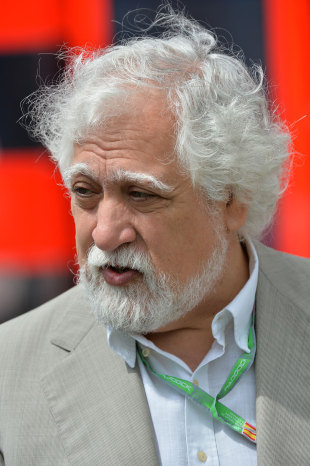- GP Week
5 minutes with ... Enrique Scalabroni
GP Week spends five minutes with the former Williams, Ferrari and Lotus designer Enrique Scalabroni

Firstly, I'm really hooked by the new look of the 2013 Auto GP cars. Are you pleased with the finished product?
I am very happy that you and many people like the new aero shape of the Auto GP. I am happy too, but I needed a little more time to define some much better aero details.
Mercedes' complex suspension system seems to have bridged the gap between a stable aerodynamic platform and consistent downforce - especially in qualifying. However, do you think the contest between aerodynamic efficiency and mechanical grip has been the main cause of their tyre degradation issues?
I think they are doing very good development with the stable aerodynamic platform, but because this is a new approach, they will need some time more to optimize the main vehicle dynamics requirements between the dynamic aero forces and the tyre requirements to obtain the maximum grip/ life tyre efficiency.
Which design has impressed you most this year?
This year, to me the Lotus F1 car has the best design balance, where aerodynamic design is in total balance with the suspension design.
Tyre and fuel conservation now are major considerations in Formula One - almost like sports car racing in the 1960s and '70s. In contrast, Le Mans is now almost a sprint race. Having worked in both Formula One and sports cars, do you think there has been an overlap in performance?
Take into consideration that both categories, 'sprints and long races', are two faces of the same coin, because both cars will operate under the same law of physics. The only difference in the design approach is to define the stiffness, strength and fatigue strength of the vital parts of each car. Therefore, it is good to understand that when we are competing at a top level, efficiency shall be the most important target to be achieved. Yes there is an important level of overlapping in performance, because the basics on both design concepts are similar.
Going back a bit, having brilliantly re-designed the back-end of the Williams FW10-Honda in 1985, did the successful Mercedes engine amalgamation into the Brawn (BGP 001) in 2009 surprise you given their time constraints?
No, because knowing the great experience and capacity that Ross Brown had, was not a surprise for any experienced designer (in the motor racing field), because we know that in F1, the only time is 'now', therefore the time they had to do the work was the correct one.
What is preferable: working with a small team with a tight budget where ideas are nurtured or a large team with lots of money, but with restrictions on ingenuity?
This is always the great question in our mind, what is better: 'working in a small team, with freedom, but with not enough technical resources?' or 'working in a top team, with limited freedom, but with important technical resources?'. Nothing in life is given for free, because we have always to choose between two opposite conditions, therefore the answer to this question will be related to the level of our philosophic mental approach. For the same person, the answer during his life not always is the same, because it is related to the transformation of his personal experience and mental preferences. Therefore, we need to accept that every person will go for his own way and this, is a God Law.
Your work on the Ferrari 641 was a major step-up from John Barnard's previous design, where he chose to work from England. When Rob White became managing director of Renault engine operations, his first order was to move the engine department to provide better cohesion - with great success. Is communication between departments the key to success in Formula One?
Yes, communication is the best key for success, especially in a very demanding working environment like F1, where time is very short and the quality of the parts must be correct. Positive results in competition (and generally in life) are dependent on the quality of the organization. We require an excellent communication level between people in the company to produce the best work in the shortest time.
It's impossible to get engineers to forget aerodynamics, but if you could oversee one rule change in Formula One, what would it be?
The best rule to re-impose in F1 would be the following: the aerodynamics of the car shall respect certain minimum constrains (open wheel for example) as they were in Colin Chapman's time, because new ideas on aerodynamics (having some freedom to create new shapes or solutions), will cost much less money than the very expensive micro aerodynamics we see today. It is necessary to make very expensive investments to develop small aero details on the actual micro-aerodynamics, instead of working on the macro-aerodynamics, where costs will be much lower. This was the force for Lotus at the Chapman time, because even if they had a lower budget than other teams, they were still the top of the class.

